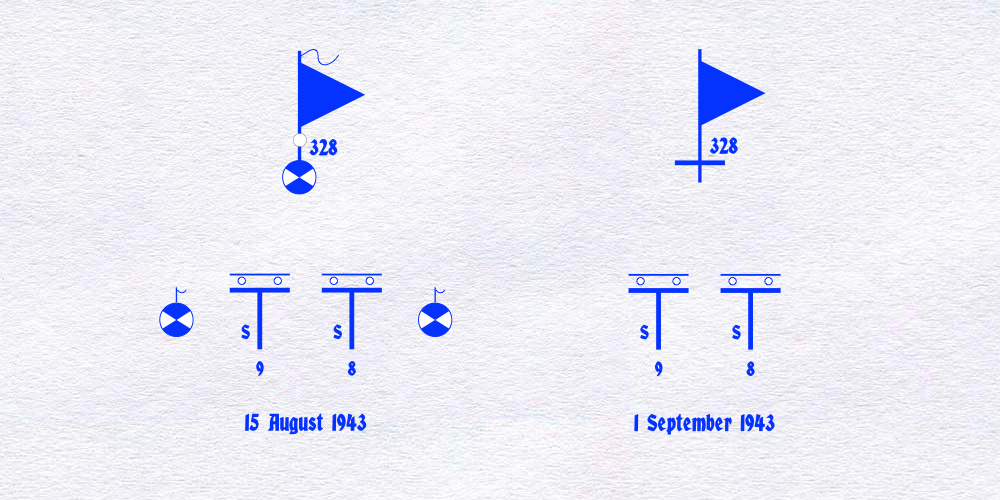On 15 August 1943, the 328th Quick Battalion (Schnelle Abteilung 328) consisted of four squadrons. The 1st and 4th Squadrons were bicycle-born reconnaissance units. The 2nd and 3rd Squadrons were anti-tank companies, each of which, by the standards of the day, was extraordinarily well equipped.
The 2nd Squadron was armed with nine 75mm anti-tank guns of the standard German type. The 3rd Squadron was armed with eight anti-tank guns that had been created by mating the barrel of a French 75mm field gun to a new carriage. The heavy anti-tank guns of both types were pulled by fully tracked prime movers.
During the last two weeks of August, the two bicycle-born squadrons suffered such heavy losses that the lieutenant in temporary command of the battalion decided to suspend their operations. He put the sick and lightly wounded members of the two squadrons in a rest camp behind the lines, put the bicycles in storage, and sent the small number of men still capable of fighting to reinforce various battle groups (Kampfgruppen) of the 328th Infantry Division.
The two anti-tank squadrons of the battalion suffered few losses during this period. (It is likely that, while the bicycle squadrons had been sent forward to assist defending against Soviet infantry, the anti-tank squadrons had been retained by the division commander as a mobile anti-tank reserve.) Thus, what had been a combined reconnaissance and anti-tank unit became, at least for a while, a pure anti-tank unit.
In recognition of this fact, the acting commanding officer of the 328th Quick Battalion used the recently introduced symbol for anti-tank battalion to depict his unit on organizational diagrams. At the same time, he continued to refer to his two anti-tank units as “squadrons.”
Source: Report submitted in response to a query by the Organization Group of the Inspectorate of Armored Troops (Generalinspekteur der Panzertruppen, Gruppe Organization) dated 12 August 1943. Bundesarchiv/Militärarchiv RH 10/261.



